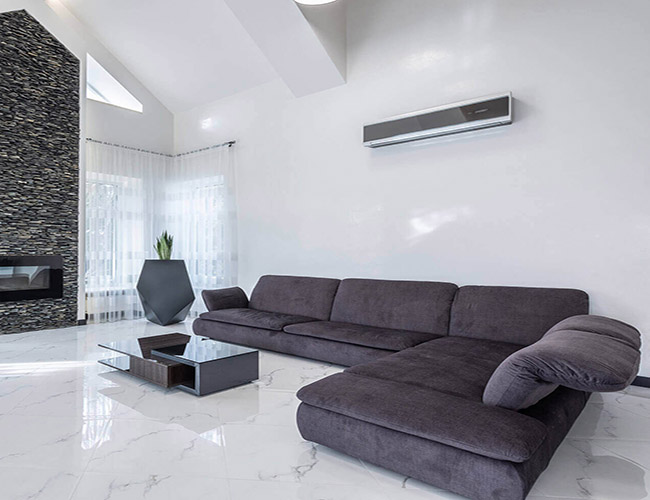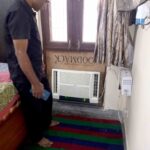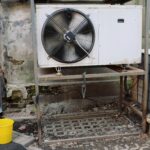Follow these points as a quick checklist before your technician arrives; they’ll help you avoid most positioning, efficiency, and maintenance headaches down the road.
| Step | What to Check | Why It Matters (in one line) | Quick Tip |
|---|---|---|---|
| 1. Pick the Right Wall | Choose an exterior wall that receives the least direct sunlight. | Reduces heat‑gain and short‑cycling, saving energy. | South‑ or west‑facing walls in India usually get the most sun—prefer north/east if possible. |
| 2. Set Indoor Height Correctly | Mount the indoor unit 7–8 ft (≈2.2 m) above floor level. | Cold air can spread evenly without blowing straight on occupants. | Leave at least 6 in/15 cm of clearance at the top and sides for filter removal. |
| 3. Plan a Straight, Short Drain | Keep the condensate drain sloping downward all the way to the outlet. | Prevents stagnant water, algae growth, and wall seepage. | If a lift is unavoidable, add a condensate pump approved for HVAC use. |
| 4. Give the Outdoor Unit Room to Breathe | Place the condenser where there’s unobstructed airflow (12 in/30 cm minimum clearance on all sides). | Better heat dissipation = cooler refrigerant, longer compressor life. | Avoid closed shafts, cramped balconies, or areas cluttered with plants. |
| 5. Provide Shade—but Not a Cage | A light awning or pergola reduces direct sun on the condenser. | Cuts head pressure by up to 10 %, boosting efficiency. | Never wrap the unit in tarpaulin; it traps heat and blocks air. |
| 6. Keep Away from Kitchen Heat & Fumes | Cooking grease coats coils and degrades performance. | Less cleaning, fewer odors pulled into the living space. | Maintain ≥3 m (10 ft) gap from gas stoves, tandoors, or exhaust chimneys. |
| 7. Check Electrical Load & Earthing | Use a dedicated MCB/RCBO rated for the AC’s amperage and proper earthing. | Prevents nuisance trips and protects electronics during surges. | Ask the installer to measure running current once the unit is commissioned. |
| 8. Confirm Wall Strength & Fasteners | Hollow brick or AAC blocks need chemical anchors or a backing frame. | Stops vibration, sagging, and potential collapse. | Always insist on galvanized or SS anchor bolts for coastal areas. |
| 9. Verify Refrigerant Piping Length & Bend Radius | Stick within the manufacturer’s max equivalent length; minimize sharp bends. | Keeps pressure drop low and avoids oil return problems. | For unavoidable long runs (>15 m) request an oil trap and extra refrigerant charge. |
| 10. Seal & Insulate Everything | Close pipe sleeve gaps with expanding foam and insulate suction lines with UV‑rated armaflex. | Blocks pests, prevents condensation drips, and saves energy. | Paint exposed insulation or use UV sleeves to stop cracking. |
Bonus Tips & “Good‑to‑Ask” Questions
-
Sizing – Confirm that the chosen tonnage matches the room’s load (rule of thumb: 600 BTU/ft², but a heat‑load calc is best).
-
Service Access – Make sure both units are reachable for filter cleaning and coil washing—future you will be grateful.
-
Noise Control – Ask for vibration pads under the outdoor unit if it’s placed on a ledge or roof.
-
Warranty – Photograph the serial numbers and keep invoices; most brands require proof for compressor claims.
-
Annual Maintenance – Book the first service at the six‑month mark to keep warranty valid and efficiency high.
Call to Action
Ready for a hassle‑free installation? Download our complete “AC Installation Tips for Homeowners” guide or schedule a pre‑installation site check with our certified technicians today. Stay cool, save energy, and keep that new AC purring for years!
👉 Call Now +919873212981| 📱 Book Online | 💬 WhatsApp Us +919873212981
Let Bade Bhai AC Expert handle the dirty work—while you relax in comfort.











